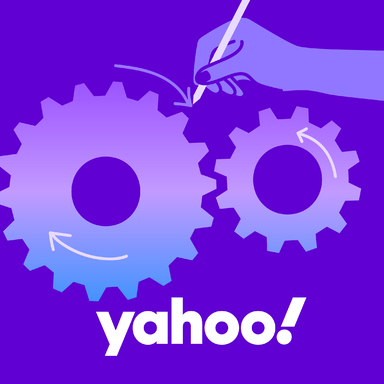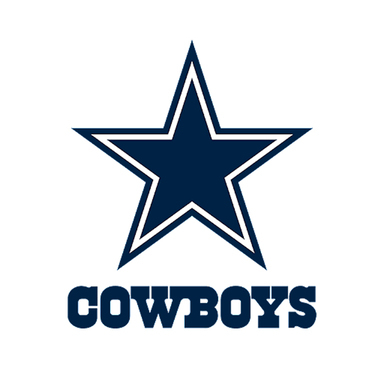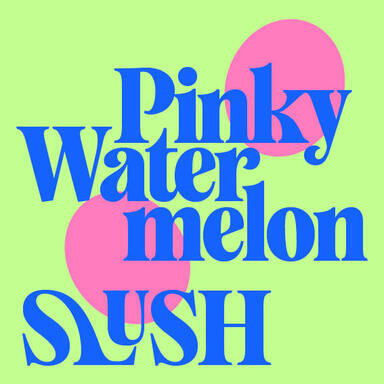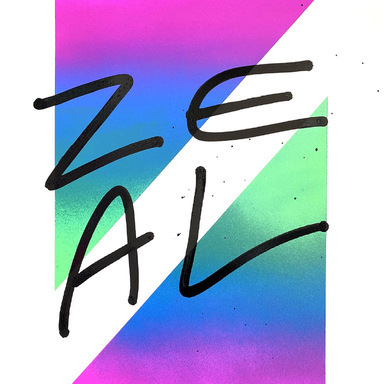
Helvetica Now: "Everyone. Everywhere. Everything."
By Alixandra Rutnik on Aug 18, 2021
Discussing Helvetica Now with Monotype's Terrance Weinzierl
Typography has always been supported by The One Club for Creativity, and that's even more true since our merging with the Type Directors Club. Both bring a rich history
So, let's talk about typefaces, namely Helvetica — an unparalleled classic or the bane of a designer's existence, depending on who you speak with. There are not many typefaces worthy of documentaries, and every new iteration of Helvetica is followed by discussion and debate amongst designers. We imagine that the conversation will continue with the latest Helvetica redesign brought to you by type designers at Monotype Studio – Helvetica Now.
We talked to Monotype’s Creative Type Director Terrance Weinzierl to learn more about the Helvetica Now Variable: “for everyone, everywhere, for everything.”
What is your stand on Helvetica?

It’s everywhere for a reason – it works well for so many different things. Helvetica has a longstanding presence and use across many industries. BMW, Crate & Barrel, Motorola, North Face, and Target all use logos made up of the Helvetica typeface.
Due to its ubiquity, it’s natural that people will have strong opinions. Some people hate blue denim, and some can’t live without it. The beauty of Helvetica Now Variable is that it breathes new life into what many consider to be a classic. With the ability to blend weights, sizes, and new compressed and condensed widths, Helvetica can be used in new and expressive ways. Monotype shaped Helvetica to be accessible for applications that need responsive typography– it’s a very modern approach.
"With the ability to blend weights, sizes, and new compressed and condensed widths, Helvetica can be used in new and expressive ways. Monotype shaped Helvetica to be accessible for applications that need responsive typography– it’s a very modern approach."
What makes this new Helvetica Now Variable different and better than Monotype’s Helvetica Now redesign in 2019?
Helvetica Now Variable is a more robust version of Monotype’s Helvetica Now released in 2019. This expansion was a combination of design and technology, with the addition of the condensed masters and the Variable formats.
Our intent is to inspire designers to mix different weight and widths for more dynamic and creative typographical designs. With Helvetica Now Variable incorporating millions of possible weights, widths, and optical sizes, creatives have the power to create fluid, typographic animations.
"With Helvetica Now Variable incorporating millions of possible weights, widths, and optical sizes, creatives have the power to create fluid, typographic animations."
This fresh take on Helvetica has been upgraded to work with the most current design tools and adapt to various uses. Helvetica Now Variable is more responsive to screen size and to other display changes like adjusting to dark vs. light modes and forms of data. Helvetica Now Variable is what Helvetica needs to thrive and survive, today and tomorrow.
You can try Helvetica Now Variable on our website.
What makes type variations crucial to building brands and their personalities?
Type is truly an embodiment of a brand’s personality, visually complementing the art of brand storytelling. When the Monotype Studio team works with a client we must be able to identify and understand that brand’s background and personality.
"Type is truly an embodiment of a brand’s personality, visually complementing the art of brand storytelling."
Our collaboration with H&M is an example. As one of the leading retailers in the world, H&M tasked Monotype with creating a typeface that would help distinguish the brand globally while accurately reflecting its brand personality. We explored the use of Didone Serif typefaces, which rose in popularity in the fashion world in the 1950s and were used extensively in high fashion magazines like Vogue and Elle.
And then came the development of HM Amperserif, a high contrast typeface with roots in fashion. This intelligent and recognizable design is on everything from large billboards to small tote bags. It gave H&M a fresh design to elevate its brand for modern times, yet pulled tenets from its fashion background to create something that reflected the H&M personality.
Another example is Monotype’s work with Southwest Airlines. Southwest’s company culture consists of focusing on humanity and adding a personal touch. With these core values in mind, Monotype developed the typeface, Southwest Sans.
We utilized large circles that introduced friendliness and a youthful feeling. Along the baseline blunted spurs and accentuated bowls emphasize the playful character of the letterforms. A typeface is often one of the first points of interaction and trust a consumer has with a brand, so allowing the letters to convey a story can effectively, communicate a brand’s values.
Branding doesn’t just live on paper stationery like it did in decades past. Today, brands need to communicate in many different forms of media– print, web, and apps on different sized devices.
The adaptability of branding and type is valuable, and Variable fonts help achieve the flexibility required. As a visual asset, a typeface is just as important as the logo, the colors, and the imagery for any brand.
As a creative type director at Monotype, how do you continuously explore and deliver new type designs while also keeping them desirable to everyone?
Action is combining goals and habits. In order to get actionable results, I have to be intentional with my daily routines and make sure they set me up for success in the long haul.
One of these habits revolves around how I approach my work in type design: I adopt a mindset of “play” instead of “work,” that makes me feel more creative, and it shows in what I produce. Being consistent in creating different typefaces helps me continuously come up with new designs and effectively communicate with clients about their goals.
For the design to be desirable, the type has to match the client’s goals. If the client is satisfied, ideally, consumers will follow suit. We try to create a typeface that reflects the brand’s identity, so if consumers resonate with that brand identity, they will resonate with the typeface as well. Like other design disciplines, we translate ideas into visuals, it just happens to be with letters.
It is no easy task to keep creating relevant typefaces that people will love. The industry is competitive, and you have to challenge yourself. For a new design, I usually begin with researching both historical and contemporary typefaces. Then, I draft up ideas on paper and move to a digital prototype of 10 to 15 characters. Making small prototypes is essential because it helps you explore stylistic options quickly before moving onto more complex design decisions and dealing with character sets and weights.
How did you get into type design in the first place?
My mother is an amateur calligrapher, so I was exposed to type at a young age. In college, I chose graphic design as my focus. I took an advanced typography class where we designed our own typefaces, and that’s when I first fell in love with it.
Why is the Type Directors Club a crucial organization for type creators and communities like yourself and Monotype Studio?
I think being a designer is a lifestyle choice, not just a job. Many designers live and breathe it, from their home décor, clothing, books, music, to where they vacation. Clubs are solutions to content that is not mainstream media– a place for niche topics to blossom.
Clubs are valuable for networking and making friends in the field. Getting an award might be just the thing to boost your confidence or pump up a resume. If you feel lost, it’s a good place to connect with people for inspiration, mentorship, and a change of pace. I love workshops and learning by doing like my experiences with TDC, TypeCon, and AIGA. I love the short, sweet, and frequent lectures organized by Creative Mornings.
Organizations that want to grow need to have content and digital activities. Videos, podcasts, or live streaming on social media are necessities in 2021. Accessibility and inclusivity are key.
Do you have any unique advice for aspiring type creators?
I advise aspiring designers to focus on progress, not perfection. Only compare yourself to your past work and not to others. If you are patient and work hard, you will get better. Any skill takes time. An Olympian who wins a gold medal may have practiced for twenty years to get there.
When I first started out, I faced a lot of rejection initially. It took a willingness to learn and grow from rejection before I started to see my work become accepted.
Always try to improve. Goals small and large are essential. Write them down where you can see them. There will always be designers with more experience and greater accolades, but determination and commitment will pay off in the end.
DON'T MISS OUT ON THE NEXT TYPE DIRECTORS CLUB SALON EVENT: LOTUS– THE MAKING OF A MAGAZINE BY AND FOR ASIAN AMERICA ON AUGUST 26.
Related














